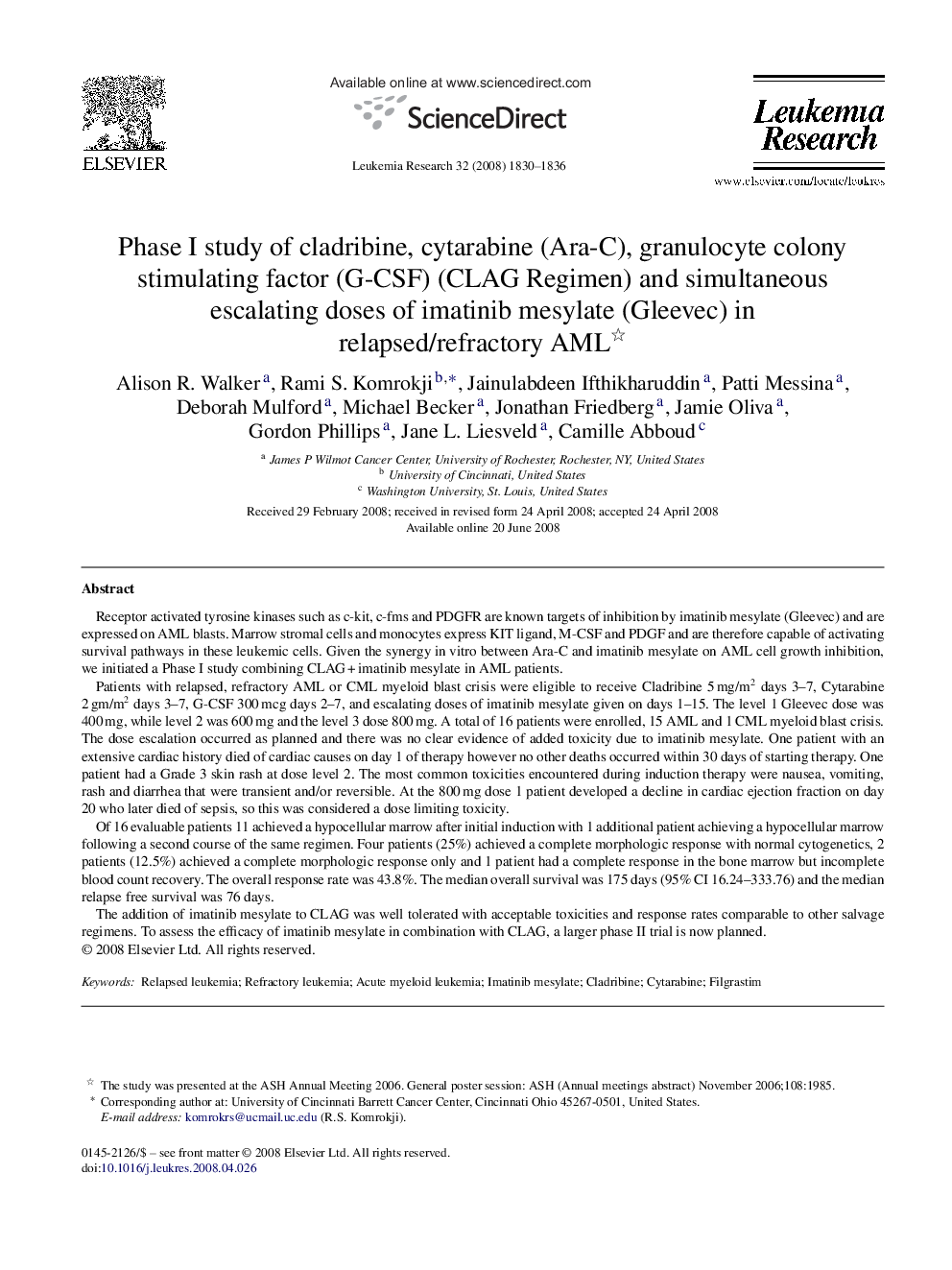| کد مقاله | کد نشریه | سال انتشار | مقاله انگلیسی | نسخه تمام متن |
|---|---|---|---|---|
| 2138837 | 1087887 | 2008 | 7 صفحه PDF | دانلود رایگان |

Receptor activated tyrosine kinases such as c-kit, c-fms and PDGFR are known targets of inhibition by imatinib mesylate (Gleevec) and are expressed on AML blasts. Marrow stromal cells and monocytes express KIT ligand, M-CSF and PDGF and are therefore capable of activating survival pathways in these leukemic cells. Given the synergy in vitro between Ara-C and imatinib mesylate on AML cell growth inhibition, we initiated a Phase I study combining CLAG + imatinib mesylate in AML patients.Patients with relapsed, refractory AML or CML myeloid blast crisis were eligible to receive Cladribine 5 mg/m2 days 3–7, Cytarabine 2 gm/m2 days 3–7, G-CSF 300 mcg days 2–7, and escalating doses of imatinib mesylate given on days 1–15. The level 1 Gleevec dose was 400 mg, while level 2 was 600 mg and the level 3 dose 800 mg. A total of 16 patients were enrolled, 15 AML and 1 CML myeloid blast crisis. The dose escalation occurred as planned and there was no clear evidence of added toxicity due to imatinib mesylate. One patient with an extensive cardiac history died of cardiac causes on day 1 of therapy however no other deaths occurred within 30 days of starting therapy. One patient had a Grade 3 skin rash at dose level 2. The most common toxicities encountered during induction therapy were nausea, vomiting, rash and diarrhea that were transient and/or reversible. At the 800 mg dose 1 patient developed a decline in cardiac ejection fraction on day 20 who later died of sepsis, so this was considered a dose limiting toxicity.Of 16 evaluable patients 11 achieved a hypocellular marrow after initial induction with 1 additional patient achieving a hypocellular marrow following a second course of the same regimen. Four patients (25%) achieved a complete morphologic response with normal cytogenetics, 2 patients (12.5%) achieved a complete morphologic response only and 1 patient had a complete response in the bone marrow but incomplete blood count recovery. The overall response rate was 43.8%. The median overall survival was 175 days (95% CI 16.24–333.76) and the median relapse free survival was 76 days.The addition of imatinib mesylate to CLAG was well tolerated with acceptable toxicities and response rates comparable to other salvage regimens. To assess the efficacy of imatinib mesylate in combination with CLAG, a larger phase II trial is now planned.
Journal: Leukemia Research - Volume 32, Issue 12, December 2008, Pages 1830–1836